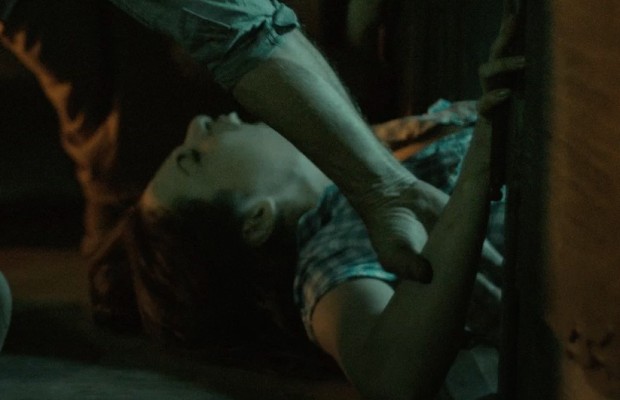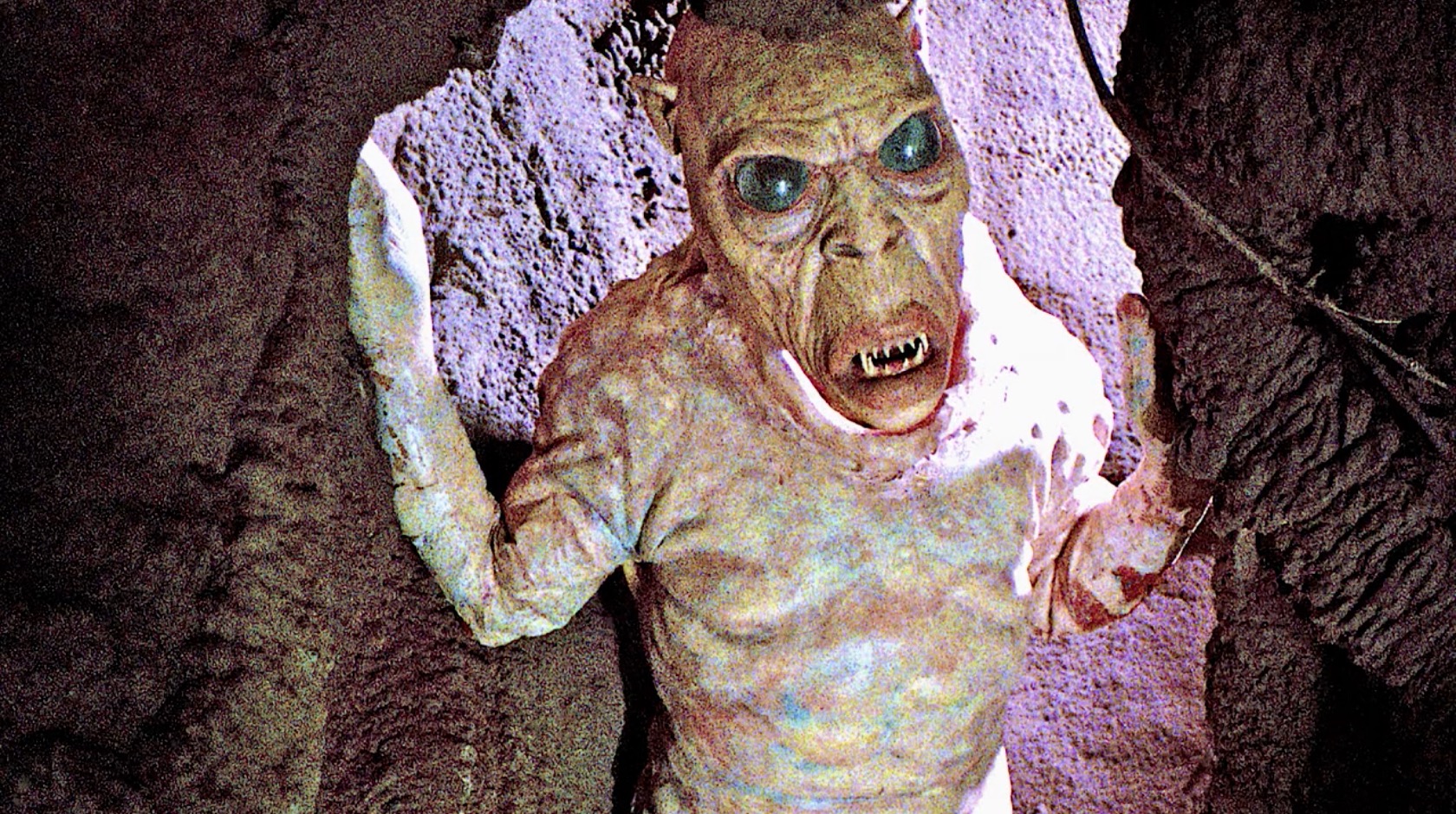Home Video
[Review] ‘Animal’ Is a Redundant Creature Feature

I enjoyed Brett Simmons’ Monkey’s Paw (review) and thought it was an interesting take on a well-tread story. It had a really eerie atmosphere and great use of location. Simmons applies those same esthetics to his new film, Animal – a creature feature that pits a group of hikers against a blood thirsty predator. Like many monster movies, Animal asks the question “Who’s the real monster? The creature or the humans?” Unfortunately, it doesn’t bring anything new to the table.
I was hoping to see Simmons put his own twist on the monster-in-the-forest motif, but there’s no distinctive hook here – nothing that makes Animal unique. Although it’s finely crafted and the creature looks awesome, it simply feels redundant.
Animal‘s characters are introduced during a car ride to the woods – two girls and three guys. During the ride, no one says anything to each other, so it’s an awkward introduction to say the least. Once they get hiking, we finally see the dynamic between them. The only one with a hint of personality is the nerdy gay guy who makes references to Taylor Swift and the Uber app. That’s as deep as the characterization goes here. He does get a nice moment much later on that drew some sympathy from me, I’ll give him that.
The film’s creature gets the same thin treatment. We’re introduced to him early on, shortly after one hiker finds a discarded backpack bearing a Marines patch. This suggests the creature could be the result of some kind of military experiment. Instead, this clue is never brought up again. I’m not expecting a full backstory detailing where the creature came from, but anything is better than nothing. Even if the creature made a Taylor Swift reference I would’ve been happy. There’s a suggestion later on that maybe the creature is luring them to the cabin in the woods the hikers wind up at, but this too is never explored further. Like I mentioned, the creature at least looks awesome. He kinda reminded me of Brundlefly, with large fangs and claws and less of a hunchback. His howling face manages to deliver a few jump scares, but nothing that truly gets under the skin.
Animal does have some slick cinematography on its side. The majority of the film takes place at night, and everything is crisp and well-lit. All of the forest locations look fantastic and the cabin the survivors convalesce in has some great production design going on. Sometimes craft can make up for a shitty narrative, but Animal‘s almost complete lack of story overshadows everything else. Throughout the whole film it feels like there’s nothing going on besides characters being picked off one by one.
There is some conflict between the hikers and three people they find already hiding from the creature in the cabin. This goes back to the old “Who’s the real monster” theme, which manages to create at least two tense moments in Animal. We’ve seen it before though and I feel like after the promise of Monkey’s Paw, Simmons would’ve taken the overdone theme and ran with it. Sadly that’s not the case though and Animal feels like every other standard creature feature.

Home Video
Gateway Horror Classic ‘The Gate’ Returns to Life With Blu-ray SteelBook in May

One of my personal favorite horror movies of all time, 1987’s gateway horror classic The Gate is opening back up on May 14 with a brand new Blu-ray SteelBook release from Lionsgate!
The new release will feature fresh SteelBook artwork from Vance Kelly, seen below.
Special Features, all of which were previously released, include…
- Audio Commentaries
- Director Tibor Takacs, Writer Michael Nankin, and Special Effects Designer & Supervisor Randall William Cook
- Special Effects Designer & Supervisor Randall William Cook, Special Make-Up Effects Artist Craig Reardon, Special Effects Artist Frank Carere, and Matte Photographer Bill Taylor
- Isolated Score Selections and Audio Interview
- Featurettes:
- The Gate: Unlocked
- Minion Maker
- From Hell It Came
- The Workman Speaks!
- Made in Canada
- From Hell: The Creatures & Demons of The Gate
- The Gatekeepers
- Vintage Featurette: Making of The Gate
- Teaser Trailer
- Theatrical Trailer
- TV Spot
- Storyboard Gallery
- Behind-the-Scenes Still Gallery
When best friends Glen (Stephen Dorff) and Terry (Louis Tripp) stumble across a mysterious crystalline rock in Glen’s backyard, they quickly dig up the newly sodden lawn searching for more precious stones. Instead, they unearth The Gate — an underground chamber of terrifying demonic evil. The teenagers soon understand what evil they’ve released as they are overcome with an assortment of horrific experiences. With fiendish followers invading suburbia, it’s now up to the kids to discover the secret that can lock The Gate forever . . . if it’s not too late.
If you’ve never seen The Gate, it’s now streaming on Prime Video and Tubi.














You must be logged in to post a comment.